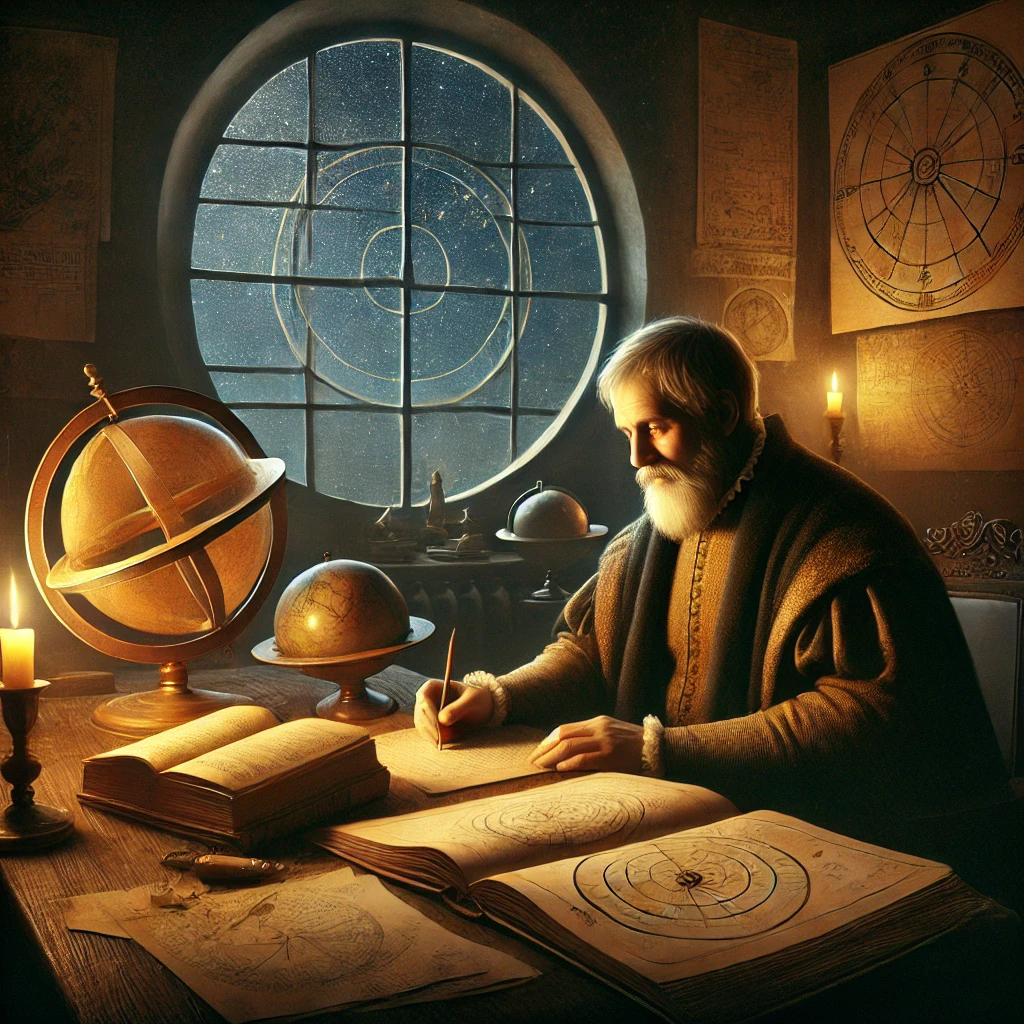Introduction
When you think of people who changed the world, Nicolaus Copernicus should be at the top of the list. His name is synonymous with the heliocentric theory—the idea that the Earth revolves around the Sun, not the other way around. This wasn’t just a minor scientific update; it was a full-blown paradigm shift. His work shattered centuries of belief and paved the way for modern astronomy.
But who was Copernicus beyond his revolutionary theory? He wasn’t just a scientist; he was a mathematician, physician, economist, and even a church official. His life was one of intellect, curiosity, and quiet defiance against the status quo. Let’s take a closer look at the man who moved the Earth—literally and figuratively.
Early Life and Education
Nicolaus Copernicus was born on February 19, 1473, in Toruń, Poland. He was the youngest of four children in a well-off merchant family. When he was around ten years old, his father died, and his uncle, a high-ranking church official, took over his upbringing. This connection would shape much of Copernicus’s later career.
His uncle made sure he got the best education possible. Copernicus studied at the University of Kraków, where he was introduced to mathematics and astronomy. Later, he traveled to Italy, studying law and medicine at the universities of Bologna and Padua. But throughout his education, astronomy remained his true passion.
The Making of a Revolutionary
Copernicus wasn’t an outspoken rebel, but he had a mind that questioned everything. At the time, the prevailing belief was that the Earth was the center of the universe, an idea rooted in ancient Greek philosophy and endorsed by the Catholic Church. This geocentric model, championed by Ptolemy, had been accepted for over a thousand years.
But something about it didn’t sit right with Copernicus. He studied ancient texts and observed the skies, noticing inconsistencies in the way planets moved. The geocentric model required complex explanations—like epicycles, which were small circular orbits within larger circular orbits—to make sense of planetary motion. Copernicus believed there had to be a simpler explanation.
The Heliocentric Model: A Bold New Idea
Copernicus began developing his heliocentric theory in the early 1500s. His idea was radical: the Sun, not the Earth, was the center of the universe. The planets, including Earth, orbited around it in perfect circles. This model immediately resolved many of the inconsistencies in the Ptolemaic system.
He kept his ideas mostly to himself for years, aware of how controversial they were. But in 1543, just before his death, he finally published his groundbreaking work, De revolutionibus orbium coelestium (On the Revolutions of the Celestial Spheres). This book laid the foundation for what would later become modern astronomy.
The Church’s Reaction: Caution and Controversy
At first, Copernicus’s work didn’t cause an immediate uproar. The Catholic Church was hesitant to react, possibly because his model was presented as a hypothesis rather than an absolute truth. However, as more scholars began to adopt his ideas, the Church took notice.
By the early 1600s, the heliocentric theory became a serious theological problem. It directly contradicted biblical interpretations that placed Earth at the center of creation. In 1616, the Church officially condemned the heliocentric model, placing De revolutionibus on the Index of Forbidden Books.
The Scientific Impact: Opening the Floodgates
Copernicus may not have lived to see the full impact of his work, but his ideas set off a chain reaction. Astronomers like Johannes Kepler built on his model, showing that planetary orbits were elliptical, not perfect circles. Galileo Galilei used telescopic observations to provide further evidence that Earth was not the universe’s center.
These discoveries shattered the medieval worldview. The heliocentric model eventually became accepted, but not without resistance. It took more than a century for the scientific community and the Church to fully acknowledge that Copernicus was right.
Copernicus Beyond Astronomy
While Copernicus is best known for his astronomical work, his intellect extended far beyond the stars. He was a skilled economist, proposing a theory of money that influenced later economic thought. He also contributed to medical studies and worked as a physician for much of his life.
His role in the church also shaped his career. As a canon—a position just below a priest—he managed church finances and administrative duties. This allowed him the stability to pursue his scientific interests while maintaining a relatively quiet life.
Why Copernicus Matters Today
Copernicus didn’t just change astronomy; he changed how humans perceive themselves in the universe. His theory demoted Earth from its privileged position and forced people to rethink their place in the cosmos. This shift in perspective paved the way for the scientific revolution.
His work embodies the power of questioning accepted beliefs. Even in an era of rigid dogma, he dared to challenge authority with logic and observation. Today, his legacy reminds us that true progress comes from curiosity and courage.
Conclusion
Nicolaus Copernicus was more than just an astronomer—he was a visionary thinker who reshaped human understanding of the cosmos. His heliocentric model upended centuries of belief and set the stage for modern science. While his ideas were initially met with skepticism, they eventually became the foundation of astronomy.
His story is one of quiet rebellion, intellectual rigor, and relentless pursuit of truth. He may not have sought fame, but his name is now synonymous with one of history’s greatest scientific revolutions. Copernicus moved the Earth—not physically, but in the minds of humanity forever.
Stay curious.




